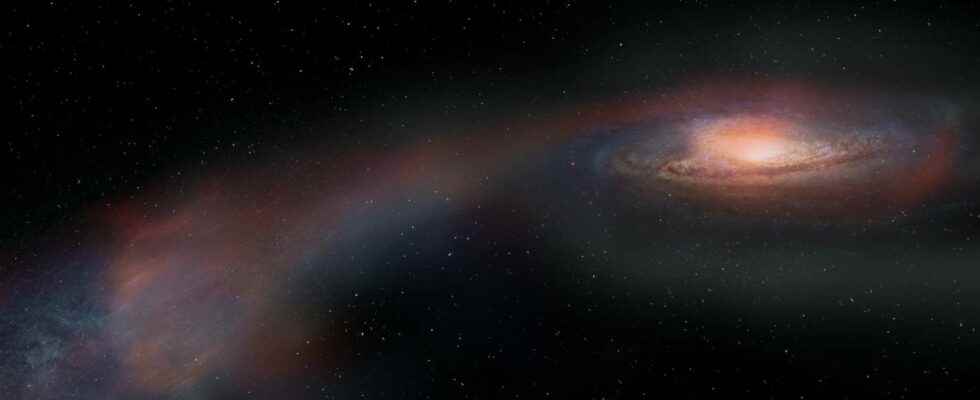You will also be interested
[EN VIDÉO] 20 years of Futura with Françoise Combes 2021 is the year of Futura’s 20th anniversary! On this great occasion, we asked our sponsors to express themselves on the subject… Françoise Combes notably lent herself to the exercise and gives us her analysis as an astrophysicist on the past, but also on the next 20 years.
The cosmology made a giant leap forward during the 1960s and 1970s, notably thanks to radio astronomy which revealed the existence of quasars and the cosmic radiation. The Treaty of the Nobel Prize for physical Steven Weinbergpublished in 1972, and that of another Nobel Prize in physics, James Peebleswhich he has published in 1980 show that we already knew a lot of things, especially if we compare them with another treatise by Peebles published in 1993.
If the theory has not made much progress since those times, the volume of data collected over the past 30 years is growing exponentially and we continue to learn about the cosmos observable through radio telescopes like those of theAtacama Large Millimeter/submillimeter Array (Alma), as evidenced by a recent publication on arXiv about the kingdom of galaxies.
A group of researchers explains that, also aided by images taken by the telescope Hubble, he looked into the case of the galaxy bearing the number SDSS J1448 + 1010 in one of the catalogs that could be compiled using the Sloan Digital Sky Survey (literally the Relevé digital Sky Sloan), abbreviated to SDSS. Remember that this is the basis of a program of surveys of celestial objects since 2000, in this case mainly galaxies, using a telescope working in the visible 2.5 meters in diameter and located at the observatory ofapache Point (New Mexico, United States).
Interpretation of the data indicates that SDSS J1448+1010 is an example of a dead galaxy, i.e. it no longer has enough gas so that significant new ones are born there stars. This is not a unique case and we know, moreover, that all elliptical galaxies are in the same situation. It is moreover one of the open questions of astrophysics and cosmology to account for the existence of dead galaxies, some of which have been dead for a significant number of billions of years.
A swan song of star formation
There are several hypotheses in this respect, one thus involves the blast of radiation from quasars and the other that of supernova explosions, to name but a few. Today, the case of SDSS J1448 + 1010 makes it possible to consider another mechanism more seriously. Hubble and Alma have made it possible to highlight, associated with SDSS J1448 + 1010, tidal tails containing approximately the equivalent of 10 billion solar masses in the form of cold gas.
Clearly, this gas was ejected from the galaxy by the tidal forces exerted by another galaxy that was close enough to interact significantly gravitationally. In fact, SDSS J1448+1010 would even be the result of a recent merger between two galaxies, merger which would have caused a burst of new star formation before it ended, such as the singing of the swan, for lack of gas, only 70 million years ago according to the astrophysicists.
Justin Spilker, astronomer at Texas A&M University and lead author of the published paper, summarizes the situation in these terms: Astronomers used to think that the only way to keep galaxies from forming stars was through violent and rapid processes, such as an accumulation of supernovae exploding in a galaxy, to blow most of the gas out of it… Our observations show that it doesn’t take a “flashy” process to suppress star formation. The much slower process of merging galaxies may also halt star formation “.
Keep in mind, however, that this is an observation for a galaxy, it is too early to say whether this scenario explaining the death of galaxies during certain mergers is negligible or not compared to the other mechanisms proposed and thought to be dominant. But research on this subject will undoubtedly continue because we have the instruments for it. Moreover, as Futura already explained in a previous articleAlma had previously provided similar observations leading to the same scenario in the case of the galaxy ID2299.
L’Atacama Large Millimeter/submillimeter Array (Alma) is a state-of-the-art telescope for studying light from some of the coldest objects in the Universe. © European Southern Observatory (ESO)
Interested in what you just read?
